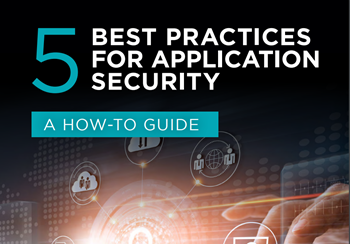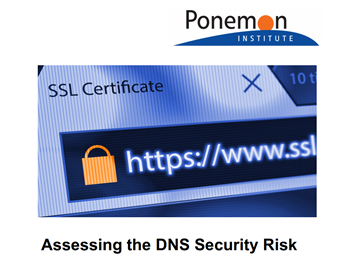In today's dynamic cyber security landscape, organizations find themselves grappling with a slew of new challenges. As the threat surface expands and cybercriminals deploy increasingly sophisticated tactics, defending digital assets has become an uphill battle for many. Against this backdrop, IT and security teams are short on staff, inundated with work, and constrained by budget limitations. To navigate this challenging terrain effectively, many businesses are turning to managed security services (MSS) as a proactive solution.
What is a Managed Security Service?
At its core, a managed security service is a third-party provider that offers around-the-clock surveillance and reinforcement of an organization’s cybersecurity infrastructure.
Instead of solely relying on internal resources, businesses entrust their security needs to specialized professionals, armed with expertise, resources, and advanced technology. This approach reduces the burden on in-house teams, who would otherwise be tasked with managing and monitoring multiple cybersecurity functions and processes at once. MSS can include a variety of services, spanning threat detection, incident response, vulnerability management, compliance monitoring, and more. These services are delivered through a blend of cutting-edge technology, skilled workers, and established processes and methodologies. This approach has gained a lot of traction, with the managed security services market expected to reach $46.4 billion by 2025.
What’s driving adoption of Managed Security Services?
Enhanced Cybersecurity Knowledge and Expertise:
Managed security services provide organizations with access to a team of experienced cybersecurity experts who specialize in identifying and mitigating threats. These experts bring with them the latest industry knowledge and best practices, ensuring that your organization remains ahead of new and emerging risks and vulnerabilities. When it comes to experience, managed security services offer a dual advantage: not only are they up to date with the latest threats and technology, but they are also equipped with an understanding of evolving compliance requirements and regulations. In this way, managed security services can help organizations adhere to the relevant laws and guidelines of their industry, while also minimizing their risk for penalties and fines.
Access to Advanced Security Tools:
By partnering with a managed security service provider, organizations can leverage advanced security tools and technologies that may be too costly to procure and maintain in-house. From cutting-edge threat intelligence platforms to machine learning algorithms and behavioral analytics, managed security services offer a suite of tools designed to enhance threat detection and response capabilities. Access to superior security tools ensure that the organization remains resilient against evolving cyber threats.
Optimization of In-House IT Resources:
Managed security services can help to reduce the burden on in-house IT teams by offloading routine tasks and responsibilities. This frees up internal IT resources to focus on strategic initiatives and value-driven projects that contribute directly to their organization's growth and success. By streamlining workflows and maximizing the productivity of internal IT personnel, managed security services enable organizations to improve operational efficiency and drive innovation. It’s therefore no surprise that small and medium-sized business are forecast to spend $29.8 billion on these services next year, according to Statista.
Cost Reduction in Labor Expenses:
One of the significant benefits of managed security services is the reduction in labor costs associated with maintaining an internal security team. By outsourcing their security, organizations can mitigate the need for hiring and training expensive cybersecurity professionals in-house. Additionally, managed security services eliminate the overhead cost of recruiting, onboarding, and retaining cybersecurity talent, which can be significant in a job market where 4 million more skilled professionals are needed worldwide. Furthermore, managed service providers typically offer predictable and transparent pricing models, allowing for better budget planning and cost control over time.
The Different Types of Managed Security Services
1. MSSPs (Managed Security Service Providers):
MSSPs offer a comprehensive suite of security services tailored to meet the diverse needs of organizations. These services often include network security, endpoint security, threat intelligence, and security monitoring. MSSPs serve as a one-stop-shop for businesses looking to outsource their security needs, providing expertise, resources, and technology to bolster their clients' cybersecurity posture. By partnering with MSSPs, organizations can benefit from 24/7 monitoring, rapid incident response, and access to advanced threat detection capabilities.
2. MDR (Managed Detection and Response):
MDR services focus on the proactive detection and response to cybersecurity threats. Leveraging advanced technologies like artificial intelligence and machine learning, MDR providers analyze vast amounts of data to identify potential threats in real-time. MDR goes beyond traditional endpoint detection and response (EDR) solutions by integrating data from multiple sources, including endpoints, networks, and cloud environments. This holistic approach enables organizations to detect and mitigate threats more effectively, reducing the risk of data breaches and cyberattacks. Gartner predicts that 60% of businesses will be employing their services by 2025.
3. MXDR (Extended Detection and Response):
MXDR builds upon the capabilities of MDR by integrating data from various security tools and sources into a centralized platform. This unified approach allows organizations to correlate security events across their entire IT environment, providing greater visibility and context into potential threats. MXDR solutions typically include features such as threat hunting, incident investigation, and automated response capabilities, enabling organizations to streamline their security operations and improve overall efficiency. Despite being a relatively new and evolving concept, 86% of cybersecurity professionals agree it could be the future of threat detection and response.
4. Managed SIEM (Security Information and Event Management):
Managed SIEM services involve the outsourcing of SIEM deployment, configuration, and management to specialized providers. SIEM platforms aggregate and analyze security event data from various sources, including logs, network traffic, and endpoint devices, to provide actionable insights into potential threats. Managed SIEM providers offer constant monitoring, alerting, and incident response services, helping organizations detect and respond to security incidents in a timely manner.
Additionally, a managed SIEM is also helpful for companies looking to simplify their existing operations and minimize tool sprawl. The average IT and security team use between 10 and 30 different monitoring tools for applications, networks, and cloud environments, creating multiple data silos that can be difficult to manage. Managed SIEM solutions not only consolidate multiple services into one, but also often include compliance reporting and integration of threat intelligence, ensuring that organizations stay in line with industry regulations and standards.
5. Managed SOC (Security Operations Center):
Managed SOC services involve the outsourcing of security monitoring and incident response to dedicated SOC facilities operated by MSS providers. These facilities are staffed by experienced security analysts who monitor and analyze security alerts in real-time, providing organizations with continuous protection against cyber threats. Managed SOC services are vital for combating alert fatigue, where security teams become desensitised to the sheer volume of alerts from diverse security tools. This can lead to missed, ignored, or delayed responses to genuine security threats, putting organizations at risk. However, by partnering with a managed SOC provider, organizations can benefit from the expertise of skilled analysts who filter through alerts, prioritize them based on their severity, and investigate potential threats promptly. This proactive approach not only reduces the likelihood of alert fatigue but also ensures that security incidents are swiftly identified and addressed, thereby enhancing the overall security posture of the organization.
Which Solution Is Right for You?
In the face of a constantly changing cyber threat landscape, organizations need to ensure they have the right security measures in place to protect themselves. Outsourcing could well be the solution, but whether organizations choose to partner with an MSSP, an MDR provider, an MXDR provider, a Managed SIEM, or a Managed SOC, organizations need to understand the individual role and benefits that each of these various managed security services can offer. By fully evaluating the needs of their business, IT leaders can make an informed decision about which managed security service and vendor is best suited to their requirements.
Access the latest business knowledge in IT
Get Access






Comments
Join the conversation...